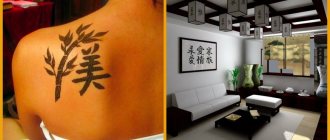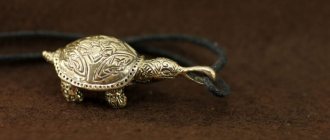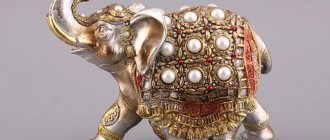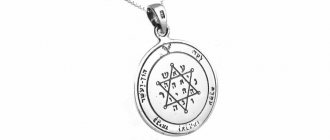The ancient Chinese philosophy of Feng Shui is increasingly attracting our attention. And not by chance. It helps to organize our surrounding world and everything around people. According to the teachings of Feng Shui, it is necessary to use the beneficial effects of energy on humans. This is facilitated by interior items in our home. These include both the furniture itself and kitchen utensils, plants, figurines and much more. I would like to dwell in more detail on the figurines. Or more precisely, there is Feng Shui on the money Maneki - Neko cat. This figurine has a special look. It is represented in the form of a cat with its front paw raised. The second one is holding a sign. Wishes of good luck and happiness are written on it in Japanese characters. The figure is mainly made of porcelain or ceramics, and was previously carved from stone. It has long been believed that it will bring good luck to its owners.
History and legends of the origin of the Japanese cat who waves his paw
There are many legends associated with this unusual Japanese amulet. The legends fascinate with their unusualness. Ancient stories are told to tourists who come to the country. This is a kind of national landmark. The following legends are considered the most common options:
- A wealthy Japanese man was driving past a sacred place - the Gotoku-ji Temple. Suddenly a thunderstorm broke out. The traveler took refuge under the crown of a nearby tree. Suddenly he noticed a cat, which seemed to invite him inside the shrine to wait out the bad weather. The wet Japanese man followed into the temple. At this time, lightning struck the tree under which the traveler was hiding. So, a cat saved a man’s life. In her honor, the rich man who escaped ordered a figurine to be made.
- A woman of easy virtue, Usugumo loved cats very much. One day, in the middle of the night, she felt the urge to visit the ladies' room. But her furry pet grabbed onto the kimono and did not let her leave the brothel room. Hearing the noise, the guard came running into the room. He thought the cat had gone mad and cut off its head. The severed part of the body flew almost to the ceiling and grabbed the snake hiding in the corner. Usugumo realized that it was not without reason that her favorite did not let her leave the room. She saved her life. The woman really missed her dead cat. To dispel the sadness of the priestess of love, one of the clients gave her a figurine in the form of a kitten.
- The elderly woman found herself in deep need. There was not enough money even for a piece of flatbread. To improve the situation, the old woman sold her pet cat. But the proceeds soon ran out. The poor thing practically died from hunger. One night she had a dream. The sold cat talked to the owner and convinced her to make figurines similar to him for sale. When she woke up, the woman did just that. People liked the figurines. They sold out instantly. So the cat saved the owner’s life.
You can notice that all the legends are somehow connected with a cat that saved a person’s life. It becomes clear why this animal is so revered in Japan.
Origin story
The origin of the figurine is, one way or another, connected with Japanese culture, and several legends that differ from each other are known.
History of Goto-kuji Temple
According to legend, in 1615 the Goto-kuji Temple was in a dilapidated state and there was no money for its restoration or proper maintenance. Once the rector of the temple picked up a stray cat on the street and in his hearts expressed to him his resentment at the injustice of fate. He complained that if the cat were a person, it might have helped him get out of poverty and failure. Some time later, along the road running next to the temple, Prince Ii Naotaka was returning from a military campaign.
Suddenly the sky became cloudy and heavy rain began to fall. Ii Naotaka hurried to take shelter from the bad weather under a tall, multi-year-old tree. He would not have noticed the gate leading to the temple if his attention had not stopped at the cat’s unusually beckoning paw. As soon as the shocked prince crossed the threshold of the temple, lightning struck the tree, smashing it almost to pieces.
What happened made a huge impression on him. After talking with the abbot, he not only gave money to repair the temple, but also dedicated his life to caring for this holy place. This temple stood for more than four centuries, surviving to this day. In the spring, ceremonies are held there to honor the cat, which played an important role in its history. By the way, Maneki-neko figurines are sold in one of the premises.
The Story of a Courtesan named Usugumo
The courtesan Usugumo from Yoshiwara was very fond of cats. In the middle of the night, Usugumo needed to leave the room, but one of the cats grabbed the edge of her kimono. A cry arose, and a guard came running and cut off the head of the poor animal. The head bounced up to the ceiling and grabbed the lurking snake with its teeth. The woman was homesick for the cat who had saved her life, and to appease her, one of the guests gave her a figurine in the form of a cat, reminiscent of Maneki neko.
The story of a lonely old lady from Imado
A single woman from Imado, in eastern Tokyo, was left without a livelihood in her old age. One day, she had to sell her beloved cat to earn food for herself. But some time passed and this money ran out. One night she dreamed of her cat and advised her to make a cat figurine and sell it to people. The old lady did just that. The figurines were liked by buyers and were quickly sold out. Thus, the woman was able to accumulate a certain amount and ensure a decent existence for herself, and the figurines spread like talismans for good luck and prosperity, becoming the prototype of the famous Maneki-neko amulet.
Version of the origin of the symbol
There is another version of the appearance of a cat with a raised paw, and it is quite prosaic. The figurine once depicted a courtesan luring visitors to the pleasure districts. A little later, the authorities began persecuting this symbol and it was replaced by the familiar modern cat of luck, invented by courtesans to circumvent the prohibitory law.
The meaning of the Maneki-neko figurine
There is another version of the origin of the magic symbol. She is quite matter-of-fact.
The cat is the personification of the Japanese courtesan, geisha. And a raised paw is a symbol of inviting a man into the house. One way or another, the figure is associated with fun, luck, and luxury. This meaning has been retained. The talisman is credited with the ability to attract success and prosperity into the life of the owner.
But the exact value also depends:
- from the color of the figurine;
- from the posture of the animal;
- from the object that the cat is holding in his hands.
There are amulets made in the shape of a cat that prolong life and guarantee longevity. Other figures are associated with attracting wealth and financial well-being. The variety of variations makes it possible to choose the symbol that seems most suitable.
Japan or China is the birthplace of the figurine?
The money Japanese cat
Maneki-neko or Alluring Cat comes from Japan. Since the figurine was brought to China, it immediately fell into the category of talismans most revered by the Chinese. In this country, its name sounds like “Lucky Cat”, and the legend of its origin has several versions. The cat is a symbol with ancient history, which is bought to attract money or good luck, and is also given to relatives and friends with the best wishes.
People often endow a talisman with miraculous powers, and a Japanese cat, waving its paw welcomingly, can be seen not only in homes, but also in shops, cafes or offices for success in business and prosperity in all endeavors.
Don't miss an interesting article on Talisman about the money toad - a powerful talisman for attracting wealth.
Why does the cat have one paw raised?
The question of why the cat is depicted with its paw raised interests many people. Explanations for this fact are found in legends. But there is no clear answer to the question.
Some esotericists associate this with an inviting gesture (legends about a rich man caught in a downpour and a courtesan).
Other experts are inclined to be of the opinion that the figurine is still connected with the ban on visiting brothels. To attract men, courtesans began to use special ceramic figurines - a kitten raising its paw invitingly.
The higher the paw, the longer the wait for success
Also, when buying a maneki-neko, you should pay attention to the height of the raised paw: if it is below the ear, then luck will come to the owner of the talisman faster. If the paw is higher than the ear, then success will have to wait a little. Sellers of mascots note that buyers most often buy cats with a paw below the ear. And this is natural: everyone wants to attract good luck quickly.
Types of symbols and their meanings
Coming to a common opinion on why a cat’s paw is raised is also hindered by the fact that there are figures in different designs. The figurines differ not only in color, but also in pose:
- A cat with its right paw raised is a symbol of good luck and prosperity. Such a talisman is purchased to attract wealth. It is bought by those people who want to improve their financial situation.
- A cat that raises its left paw symbolizes fun and communication. Such a talisman will help you establish contact with people around you.
- A figurine with two outstretched legs represents both communication and financial well-being.
Esotericists claim that the higher the figurine’s paw is raised, the more powerful the energy flow directed towards the owner.
In addition, the meaning of the talisman is also influenced by the color and the object that the cat can hold in its hands.
What does the figurine promise?
Every European who has visited the temple always tries to bring back a figurine of a cat. It is customary to pay attention to the cat's paws. Each figure can have either its left or right leg raised. So, raising the left one will mean attracting clients and buyers, and raising the right one will mean attracting money and good luck. They try to look at the amplitude of its rise. The stronger it is, the higher the effect of the talisman.
The cat always has a coin, it usually hangs on his neck. This is no coincidence. According to ancient legend, he stole it from a rich man for his sick neighbor. So he wanted to thank him for giving him freshly caught fish every morning. For the cat’s virtue, the statuette was awarded with such an accessory around its neck.
On some figurines, the cat can hold a koban. This is a coin with a nominal value of one ryu. But what’s interesting is that the coin has an inscription of ten million. Today this amount is equal to ten billion US dollars.
The cat can be decorated with a red collar with a bell. This indicated that the animal was previously quite expensive. Not everyone could afford the pleasure of keeping a cat. To ensure that the pet did not get lost anywhere, it was equipped with a similar bell.
At the end of the twentieth century, a museum was dedicated to the animal. There is a whole collection of cats that bring good luck. To attract customers, the director came up with such a “trick”. At the threshold, visitors are greeted by a robot cat, which waves to all passers-by, as its motion sensor is triggered.
What influences the color of a Maneki-neko figurine?
Japanese Maneki-neko is made in different colors. Depending on the color of the figurine, the meaning of the talisman also changes. Therefore, when purchasing or making it yourself, you need to take into account the desires and needs of the future owner of the amulet.
The classic version of the cat is presented in three tones:
- white;
- red;
- black
This figurine is a symbol of good luck.
Fact! In Rus', from time immemorial, it was considered a good sign to keep a three-haired cat in the house. The Slavs believed that the furry animal would bring good luck to its owners.
- White maneki is suitable for those people who want to develop and learn new things; she is the personification of calm, balance, and knowledge.
- A black cat protects against evil spirits and other evil spirits. The owner is not in danger of damage or the evil eye. With its paw, Maneki-neko calls upon the forces of light to protect its owner. More often the figurine is presented with a coin in his hands and wearing an apron.
- Red Maneki-neko is designed to restore a person’s energy balance. It repels negativity and attracts positive energy to the owner.
- The blue cat helps stabilize the state of mind. This is a suitable talisman for those who lack peace and harmony.
- A pink cat will relieve loneliness. It will make the owner attractive to the opposite sex. It is bought by people who dream of stable family relationships. In addition, this is an ideal talisman for creative people; it relieves melancholy, depression, and mood swings.
In Japan, they believe that a pink kitten with two raised legs will attract the only person with whom the owner will tie his fate.
- Green maneki will strengthen mental abilities, develop memory, and serve students well. This is a favorite mascot of students.
Esotericists recommend choosing a talisman taking into account its color scheme and the object that the figurine is holding in its hands.
Types and meanings of the talisman
In Japan, Maneki-neko is found with raised right, left and two paws.
- The option with the waving left paw is the most common. It symbolizes establishing connections between people and attracting customers, which is why such figurines are especially often used in shops, restaurants, rooms with slot machines and other crowded places.
- A figurine with a raised right paw is purchased to attract material wealth and good luck in business. This cat with its paw raised is found both in offices and residential buildings.
- As for the cat with two raised paws, this is an option for those who hope to get everything at once. Many people buy this type of amulet to protect their home from robbery and other troubles.
The standard colors of Maneki-neko are white, black and orange. This spotted color in cats is called calico.










